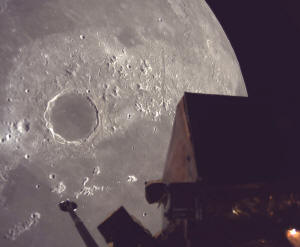|
This time, the company’s lander named Resilience was aiming for
the moon’s far north in Mare Frigoris, or Sea of Cold. NASA’s
Lunar Reconnaissance Orbiter relayed pictures of the crash site
last week where Resilience and its mini rover ended up as
wreckage.
Company officials blamed the accident on the lander's laser
range finder, saying it was slow to kick in and properly measure
the spacecraft's distance to the lunar surface. Resilience was
descending at a rapid rate of 138 feet (42 meters) per second
when contact was lost, and crashed five seconds later, they
said.
Bad software caused ispace's first lunar lander to slam into the
moon in 2023. Like the latest try, the problem occurred during
the final phase of descent.
Of seven moon landing attempts by private outfits in recent
years, only one can claim total success: Firefly Aerospace's
touchdown of its Blue Ghost lander in March. Blue Ghost launched
with Resilience in January, sharing a SpaceX rocket ride from
Florida.
Aside from Texas-based Firefly, only five countries have pulled
off a successful lunar landing: the Soviet Union, the U.S.,
China, India and Japan. And only the U.S. has put astronauts on
the moon, back during NASA's Apollo program more than a
half-century ago.
Despite back-to-back losses, ispace is pressing ahead with its
third moon landing attempt in 2027, with NASA cooperation, as
well as a fourth planned mission. Extra tests and improvements
will add as much as 1.5 billion yen (more than $10 million) to
the development costs, officials said.
CEO and founder Takeshi Hakamada stressed that his company “has
not stepped down in the face of setbacks" and is looking to
regain customers' trust. Outside experts will join the accident
review, and ispace will collaborate more closely with the
Japanese Space Agency on technical matters.
“We’re firmly taking the next step toward our future missions,”
he said in Japanese.
All contents © copyright 2025 Associated Press. All rights reserved

|
|




